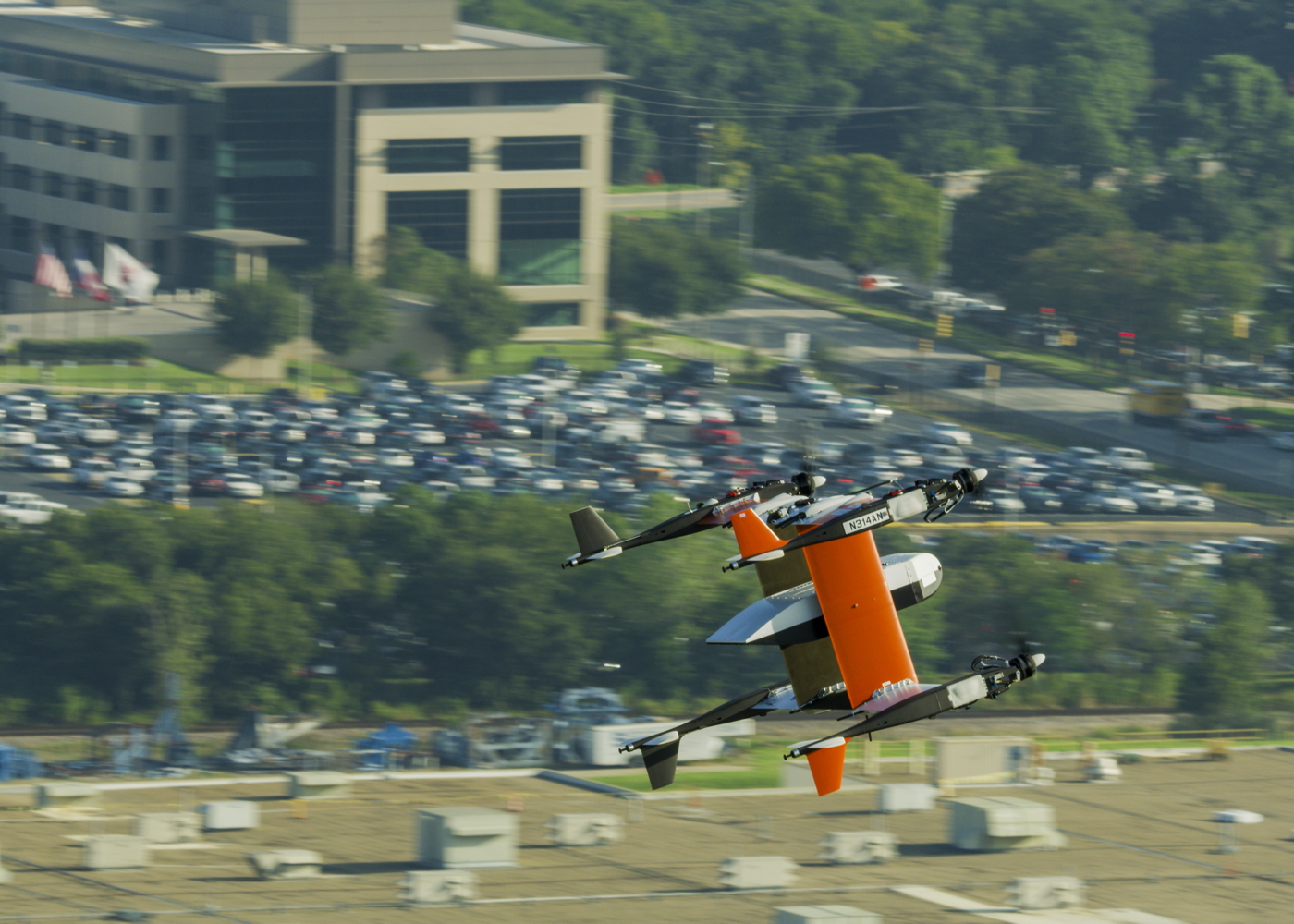Bell has successfully completed a landmark demonstration of its Autonomous Pod Transport (APT) 70 eVTOL cargo drone, flying the vehicle autonomously through the Dallas-Fort Worth metropolitan area in a simulation of a critical medical transport mission.
The demo in north Texas was part of NASA’s Systems Integration and Operationalization (SIO) demonstration activity, which aims to accelerate progress toward routine commercial use of unmanned aircraft systems (UAS) in the national airspace system. Bell was one of three UAS developers selected to take part in the activity, along with General Atomics and PAE ISR (now American Aerospace Technologies, Inc.), which focused on high- and low-altitude infrastructure inspection missions, respectively.
According to Jennifer Andrews, Bell’s project lead for the demonstration, “when we entered into the SIO program, we looked at a couple different opportunities for commercial operations for an air logistics platform such as the APT 70. We found the most challenging one to be the urban mission, and our focus was to emulate what we would think a portion of the flight path would be for urban critical medical transport.”
Bell coordinated with the Federal Aviation Administration (FAA) and air traffic control to identify a 9.5-mile (15-kilometer) route through the urban environment along the Trinity River, including transitions into and out of the busy Class B airspace surrounding Dallas-Fort Worth International Airport (DFW). Andrews explained: “To maintain safety both in the air and the ground, we looked at where we could fly the aircraft over unpopulated regions in the metroplex while still maintaining the air environment of a metroplex. And then from there we entered into discussions with NASA and the FAA on the actual flight route; we took about 10 months to iterate with them.”
Those preparations paid off on the morning of Sept. 28, when the APT 70 departed from Bell’s Floyd Carlson field in Fort Worth for its approximately 11-minute flight along the pre-programmed route. After lifting off vertically, the tail-sitting biplane then rotated to fly the circuit path at an altitude of 500 feet above ground level. According to Andrews, although a remote pilot was monitoring the autonomous flight from a ground station, the aircraft performed as expected and he did not have to intervene. A chase helicopter followed the APT 70, both to provide visual observation and to capture photos and video.

“The demonstration itself proved the coordination process that was used to approve the flight in this complex environment,” said John Del Frate, NASA’s SIO project senior engineer. “Lessons learned have been captured regarding the lengthy process for this flight and will be included in a best practices document, which is planned to be released in a few months.”
Bell had two technology partners for the demonstration: the autonomous aviation startup Xwing and the University of Massachusetts Amherst’s Center for Collaborative Adaptive Sensing of the Atmosphere (CASA). Xwing’s airborne, multi-sensing detect-and-avoid system — comprising radars, ADS-B, a visual system and onboard processing — provided aircraft tracks and pilot alerts transmitted to the ground station. Meanwhile, CASA’s integrated display generated local weather risk awareness and route-based weather alerts.
According to Bell, results from the demonstration will be used to evaluate detect-and-avoid and command-and-control technologies for use in future certified UAS operations. Data collected during the demonstration will be used to support future standards development and FAA certification guidelines.
Andrews said that the demonstration team was “very pleased” with the outcome of the demonstration.
“With the APT 70, we took an above-300 pound aircraft and were able to fly it successfully autonomously in an urban environment with all the challenges that [entails], as well as coordinate transition into and outside of class B airspace,” she said. “We feel this marks a step towards routine commercial operations that can lead to improving overall public safety.”
The APT 70, which will carry payloads of up to 70 pounds (31 kilograms), is one of a family of cargo drones being developed by Bell. In addition to rapid transport of critical medical supplies, Bell envisions APT drones being used for package delivery, offshore resupply, disaster relief and other purposes. The company is pursuing military as well as commercial opportunities for the product.








